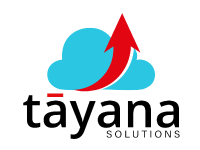Unlock Your Business Potential: Streamline Operations with Low-Code Solutions
This page explains how low-code and no-code solutions empower businesses to customize their software, addressing common frustrations and unlocking new levels of efficiency.
(a) Challenges: The Struggle with Traditional Software Customization
Many businesses face the frustrating reality of being held back by inflexible software. Making even the smallest changes to business software often requires the assistance of developers, which can be a costly and time-consuming process. It’s like needing a plumber to fix a leaky faucet when you could easily do it yourself with the right tools. This dependence on developers leads to several key challenges:
- High costs: Paying for developers to make every small adjustment can quickly become expensive.
- Time delays: Waiting for developers to implement changes can slow down critical business processes and hinder your ability to adapt quickly.
- Lack of control: Businesses are often at the mercy of developers and their schedules, limiting the ability to be agile and take control of their software.
- Frustration: The inability to easily customize software can be incredibly frustrating, preventing businesses from optimizing their workflows.
- Complexity: Even simple modifications, like changing who can edit a certain field on a form, can require complex coding.
(b) Solution: Low-Code/No-Code Development for Business Empowerment
The good news is that there’s a powerful solution emerging in the software world: low-code and no-code development. This approach empowers non-programmers to customize their software by visually configuring settings, dragging, dropping, and setting up logic, rather than writing complex code. In effect, it’s like building with Legos for your software.
Here’s how low-code/no-code development provides solutions:
- Accessibility: It allows individuals without coding expertise to modify their software according to their specific needs.
- Visual Configuration: Customizations are made using visual tools, which greatly simplifies the process compared to coding.
- User-Friendly: It is designed to be intuitive and user friendly.
- Real-World Example: For instance, on a sales order form, access to the customer order number field can automatically change based on the user’s role, allowing sales reps to edit it, while locking it down for accounting to prevent accidental changes.
- Acumatica Customization: Platforms like Acumatica provide built-in tools to add logic without coding.
- Training is Key: While these tools are user-friendly, training is important to ensure that people understand the power they have and use it responsibly.
- This is like giving someone the keys to a powerful machine, requiring some instruction for safe operation.
Benefits of Adopting Low-Code/No-Code Solutions
By embracing low-code and no-code solutions, businesses can enjoy significant advantages:
- Increased Agility: Quickly adapt to changing business needs without relying on developers.
- Cost Savings: Reduce development expenses by handling customizations internally.
- Time Efficiency: Implement changes rapidly, improving workflows and overall productivity.
- Greater Control: Take charge of your software and tailor it to your specific processes.
- Empowerment: Enable your team to optimize their tools, boosting both productivity and engagement.
- Unlock Potential: Free up resources for other business priorities.
- Streamlined Operations: Improve efficiency and reduce bottlenecks through customized solutions.
- Flexibility: Gain unprecedented flexibility in how you use your software.
- Competitive Edge: Gain a competitive advantage by adapting more quickly to market changes.
Call to Action
Ready to unlock the full potential of your business software? Contact Tayana Solutions at 678-910-2774 to explore how their Acumatica customization experts can help you achieve more with low-code/no-code solutions.
